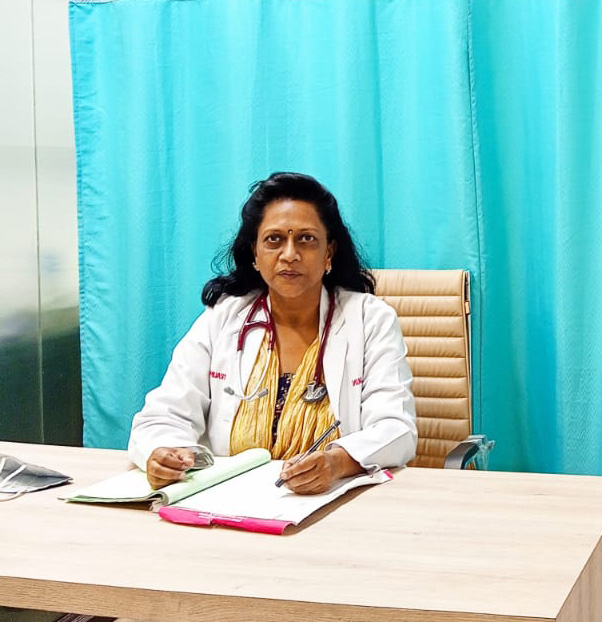By now, we are well aware of the discomfort and potential dangers of hernias when left untreated. A hernia occurs when organs or tissues protrude through weakened spots in surrounding muscle or connective tissue.
This weakening or tearing of tissue allows intestines to push through muscles, creating a noticeable lump beneath the skin. Did you know that a hernia can get serious when it gets stuck in the hole that it’s pushed through and can’t go back in causing necrosis (tissue death)?
Thus it is best to consult your doctor to identify the type of hernia and get suitable treatment for the same. Today, we are going to discuss Hiatal Hernia and what it feels like when you suffer from it. Dr Amita Jain, India’s leading laparoscopic surgeon and hernia surgeon specialist shares her insights on the topic with her readers.
What is a Hiatal Hernia?
When the upper portion of the stomach protrudes through the diaphragm into the chest area, it results in a condition known as a hiatal hernia. The diaphragm is the muscle that separates the abdomen from the chest and helps you breathe.
There are four types of hiatal hernias.
The most common type, type I, is referred to as a sliding hiatal hernia, where the stomach and esophagus slide into and out of the chest through the hiatus. This type is typically small and often asymptomatic.
- Types II, III, and IV, known as paraesophageal or fixed hiatal hernias, involve a portion of the stomach pushing through the diaphragm and remaining in place. While most hiatal hernias are not severe, there’s a risk of complications such as blocked blood flow to the stomach, which can lead to serious damage and require immediate medical attention.
- Most individuals with hiatal hernias, particularly the common sliding type, may not experience noticeable symptoms.
However, if symptoms do arise, they are often associated with gastroesophageal reflux disease (GERD) and include:
Heartburn: When you have a hiatal hernia, your stomach protrudes through the opening in the diaphragm, where the esophagus passes.
This can result in the regurgitation of food or liquids into your mouth, leading to the reflux of stomach acid into the esophagus, which can cause a burning sensation in your chest.
Chest pain: Hiatal hernia-related chest pain can mimic symptoms of a heart attack, necessitating prompt medical evaluation to rule out other conditions.
Feeling full soon after eating: The upward displacement of the stomach may cause it to become slightly pinched, leading to a sensation of fullness even after consuming small amounts of food.
Shortness of breath: Pressure exerted on the diaphragm by the hernia or compression of the lungs can result in difficulty breathing.
Bloating or belching: Increased stomach pressure and acid reflux can induce bloating and frequent belching as the digestive system attempts to process food.
Is Hiatal Hernia Serious?
While complications from a hiatus hernia are uncommon, persistent exposure of the esophagus to stomach acid can result in ulcers, scarring, and alterations in esophageal cells, potentially raising the likelihood of developing esophageal cancer.
What are the Diagnosis and Treatment?
A hiatal hernia is diagnosed by checking your medical history and doing a physical exam first. If you’re having symptoms like acid reflux, your doctor might do the following tests:
- A chest X-ray captures still images of the chest, including the esophagus, using radiation.
- An esophagram records real-time video of swallowing, showing the esophagus in motion.
- Upper endoscopy uses a camera on a tube to examine the esophagus and stomach, displaying live images on a screen.
- Esophageal manometry measures muscle pressure in the esophagus using a catheter, translating data into a pressure map.
Treatment: Mostly, individuals can alleviate hiatal hernia pain and discomfort by using medications like antacids or acid blockers and making minor lifestyle adjustments. Surgery might become necessary if dealing with a particularly large or distressing hiatal hernia.
Therefore, in a nutshell, a hiatal hernia occurs when the stomach protrudes through the diaphragm into the chest, often leading to symptoms like heartburn, chest pain, and bloating. While typically manageable with medication and lifestyle changes, severe cases may require surgical intervention to alleviate discomfort and prevent complications.

Dr Amita Jain is a surgeon with the highest degree of professional competence, precision and surgical craftsmanship. Performed all complicated general surgery procedures with in depth knowledge of invasive and few minimal invasive and onco surgical techniques. Underwent special training in trauma, executed various trauma-related complex life-saving neurosurgical procedures, reconstructed injured mangled limbs and performed vascular and reconstructive procedures with critical care.
Dr Amita Jain holds 28 plus years of rich experience in Trauma and General Laparoscopic Surgeries (including Gallbladder stone removal, appendix removal, hernia repair surgery, piles and fissure surgeries). She was the Professor Surgery of at the Army College of Medical Sciences and Base Hospital Delhi Cantt. In 1994 she was commissioned as Surgeon under the United Nations Mission in Congo. From 2020 to 2022, she worked with Bansals Hospital. Currently, Dr Amita Jain is the Senior Consultant, (Speciality: General and Laparoscopic Surgeon) at Artemis Lite Hospital, New Delhi and Sr. General and Laparoscopic Surgeon at Rainbow Children Hospitals, Malviya Nagar, Delhi.
